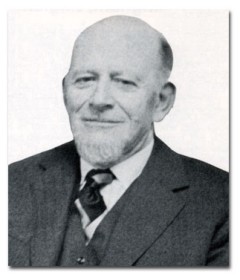Liberty Matters
Some Final Thoughts on Secondary Institutions
 Lachmann's distinction between fundamental and secondary institutions seems like a potentially fruitful approach to reconciling important issues that arise when moving towards a "looser" conception of plan coordination that can better cope with uncertainty. (O'Driscoll and Rizzo 1985, Lewin 2016) So I will take another stab at distinguishing between the rule-like nature of Lachmann's fundamental institutions and the "abstract interface" nature of Lachmann's secondary institutions.
Lachmann's distinction between fundamental and secondary institutions seems like a potentially fruitful approach to reconciling important issues that arise when moving towards a "looser" conception of plan coordination that can better cope with uncertainty. (O'Driscoll and Rizzo 1985, Lewin 2016) So I will take another stab at distinguishing between the rule-like nature of Lachmann's fundamental institutions and the "abstract interface" nature of Lachmann's secondary institutions.Professor Rizzo raises an important point by noting that "we … should not be thinking of fixed rules so much as hierarchies of rules." (Comment: "Expectations and Predictability") This concept of default hierarchies of rules (Holland et al. 1986, Rizzo 1999, Whitman 2009) provides a way to make sense of Lachmann's discussion of the "gapless" nature of the legal order. But as Lachmann points out, this does not apply to all institutions: "The legal order abhors a vacuum no less than nature does. In the wider institutional sphere, we find no parallel to this characteristic. Some institutions will be complementary to one another in that they require each other's services, like Post Office and railways or airlines." (1971, 77)
Whether or not we want to call these "institutions," the distinction Lachmann makes is important. He is drawing our attention to the abstract interface that enables complementary services to connect. In essence he is directing our attention to the division of knowledge. As Lachmann (1971, 50) writes, "We know enough to make it serve our ends, though we may know next to nothing about the internal working order of these institutions."
The abstract interface is the divide. It enables us to make use of the knowledge of others without having to know it ourselves; we specify what we want but not how to do it. We can think of this as the modularization of knowledge. The abstract interface between modules matters because we need to combine these productively as circumstances change.
Modularity and abstraction bundle together several closely related concepts – information-hiding, encapsulation, interface, and types – which play important roles in plan coordination. Encapsulation ensures that the means under my control are not interfered with by others. Information-hiding ensures that my plans don't depend on the details of the means under the control of others. Interfaces are the abstract aspects that we can both rely on. Abstract interfaces also enable us to distinguish the typical from the unique.
The interface defines a type. It defines what instances are members of this type (abstracting from the unique aspects that do not matter for this purpose), and it distinguishes this type of thing from all other things. The type helps us know when our expectations will be valid. We expect certain behavior from this type of thing.
There is an interesting tradeoff here. We need enough knowledge of the actions of others to coordinate our plans; but too much knowledge limits our ability to cope with unexpected change. One way to think of this is in terms of "possible worlds" and Hayek's "adaptation to the unknown." Adaptiveness comes from being able to cope with multiple possible worlds; coordination comes from agreement on which of the possible worlds we are in. More knowledge means fewer possibilities we need to consider, thus making it easier to coordinate. But relying on too-detailed knowledge means there are fewer possible worlds in which we can coordinate. Abstract interfaces seek to balance the knowledge needed to coordinate while keeping maximum responsiveness to unforeseen possibilities.
This reading of Lachmann suggests a possible reconciliation with the work of Alfred Schutz, whose discussion of types and degrees of anonymity (Schutz 1967) explores similar themes. It also connects to Don Lavoie's work (Lavoie 1991) to reconceptualize subjectivism, as highlighted by Professor Lewis (Comment: "Lachmann and his Followers on the Nature of Subjectivism"). Expectations are as much a question of institutions (fundamental and secondary) as they are of individual decisions.
I will close by noting a certain discomfort with Hans Eicholz's characterization that one must make a choice between "highfalutin" Gadamer and "workaday" Schutz. The metaphor of a crossroads does not seem apt. One can learn much, as did Lavoie, from both roads (from their similarities and their differences).
Copyright and Fair Use Statement
“Liberty Matters” is the copyright of Liberty Fund, Inc. This material is put on line to further the educational goals of Liberty Fund, Inc. These essays and responses may be quoted and otherwise used under “fair use” provisions for educational and academic purposes. To reprint these essays in course booklets requires the prior permission of Liberty Fund, Inc. Please contact oll@libertyfund.org if you have any questions.